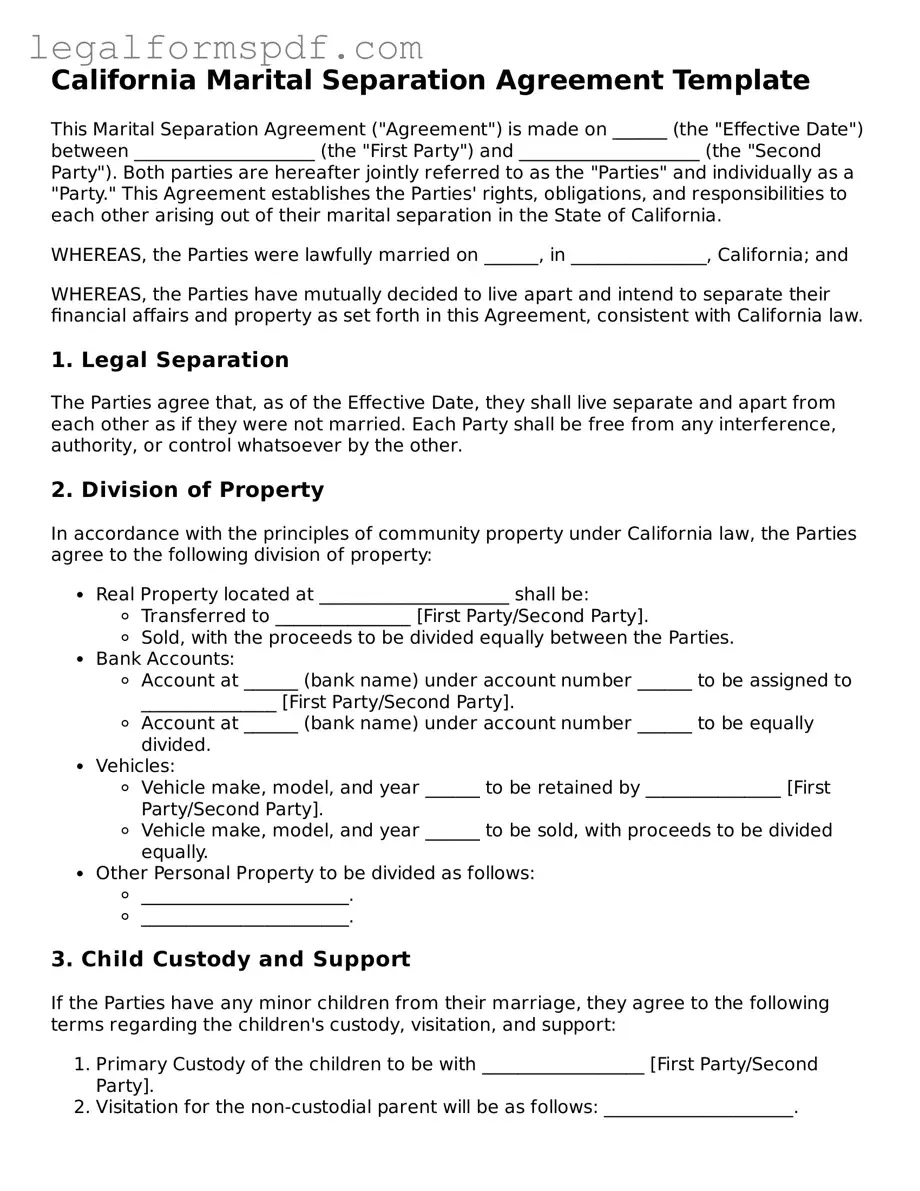California Marital Separation Agreement Template
This Marital Separation Agreement ("Agreement") is made on ______ (the "Effective Date") between ____________________ (the "First Party") and ____________________ (the "Second Party"). Both parties are hereafter jointly referred to as the "Parties" and individually as a "Party." This Agreement establishes the Parties' rights, obligations, and responsibilities to each other arising out of their marital separation in the State of California.
WHEREAS, the Parties were lawfully married on ______, in _______________, California; and
WHEREAS, the Parties have mutually decided to live apart and intend to separate their financial affairs and property as set forth in this Agreement, consistent with California law.
1. Legal Separation
The Parties agree that, as of the Effective Date, they shall live separate and apart from each other as if they were not married. Each Party shall be free from any interference, authority, or control whatsoever by the other.
2. Division of Property
In accordance with the principles of community property under California law, the Parties agree to the following division of property:
- Real Property located at _____________________ shall be:
- Transferred to _______________ [First Party/Second Party].
- Sold, with the proceeds to be divided equally between the Parties.
- Bank Accounts:
- Account at ______ (bank name) under account number ______ to be assigned to _______________ [First Party/Second Party].
- Account at ______ (bank name) under account number ______ to be equally divided.
- Vehicles:
- Vehicle make, model, and year ______ to be retained by _______________ [First Party/Second Party].
- Vehicle make, model, and year ______ to be sold, with proceeds to be divided equally.
- Other Personal Property to be divided as follows:
- _______________________.
- _______________________.
3. Child Custody and Support
If the Parties have any minor children from their marriage, they agree to the following terms regarding the children's custody, visitation, and support:
- Primary Custody of the children to be with __________________ [First Party/Second Party].
- Visitation for the non-custodial parent will be as follows: _____________________.
- Child support payments will be made by the non-custodial parent to the custodial parent in the amount of $________ per month.
4. Spousal Support
The Parties agree on spousal support as follows:
______________________ [Name of Party] shall pay to ______________________ [Name of Party] the sum of $________ per month for a period of ______ years/months.
5. Entire Agreement
This Agreement constitutes the entire agreement between the Parties concerning their marital separation and supersedes any prior or contemporaneous agreements, understandings, or negotiations. Any amendments to this Agreement must be in writing and signed by both Parties.
6. Governing Law
This Agreement shall be governed by and construed in accordance with the laws of the State of California.
IN WITNESS WHEREOF, the Parties have executed this Agreement as of the Effective Date first above written.
______________________ [First Party]
______________________ [Second Party]
